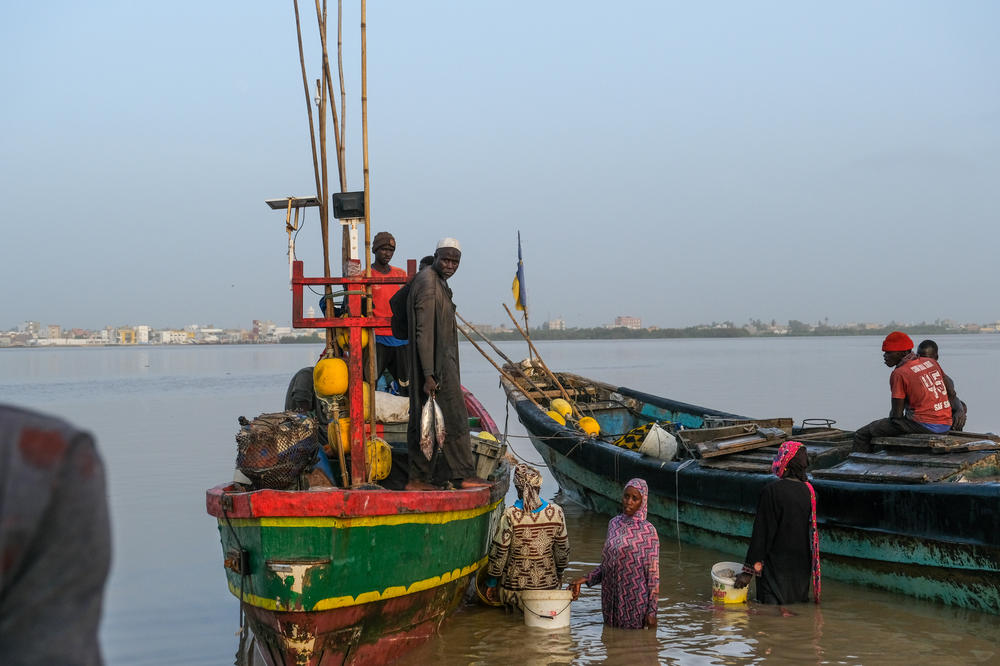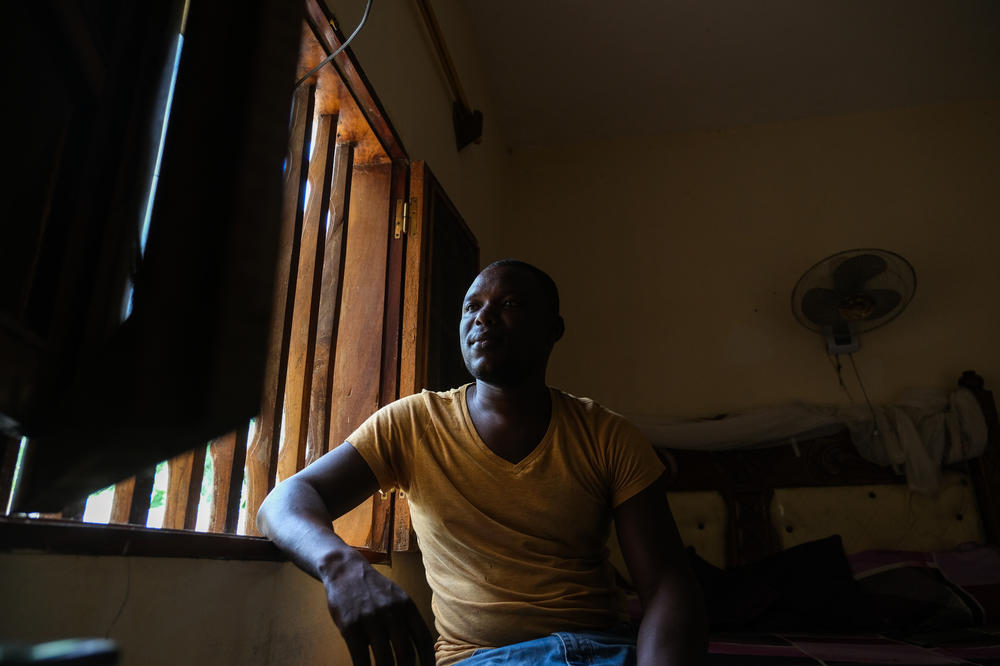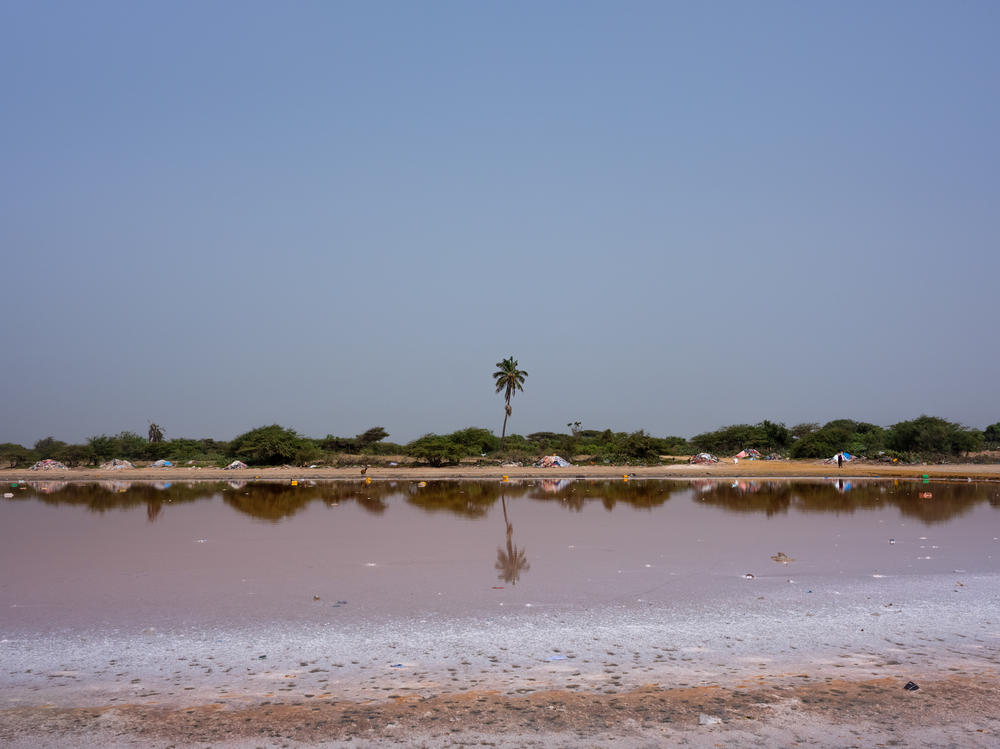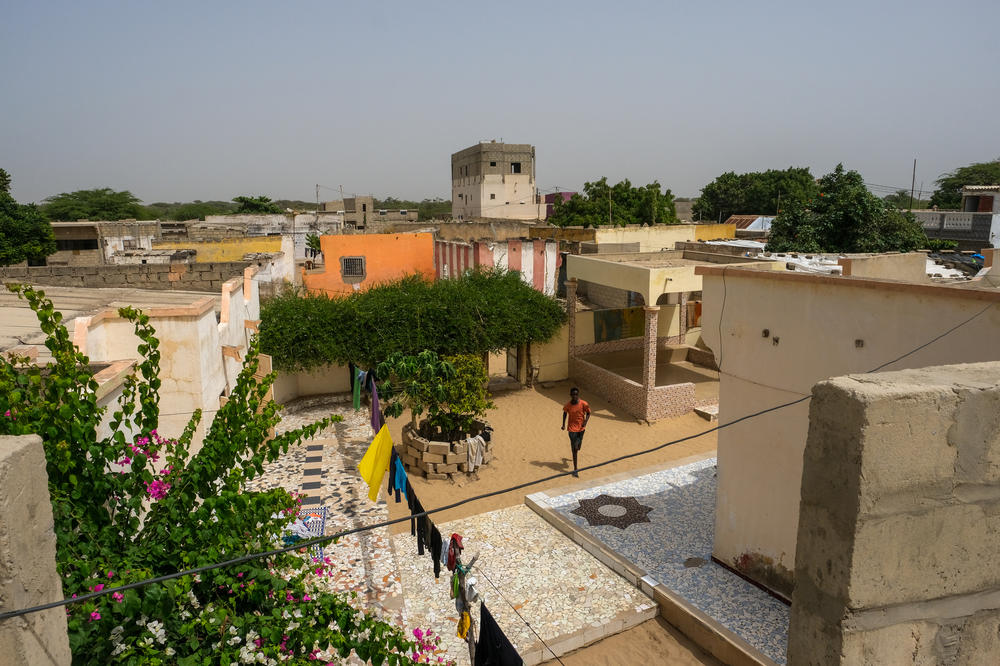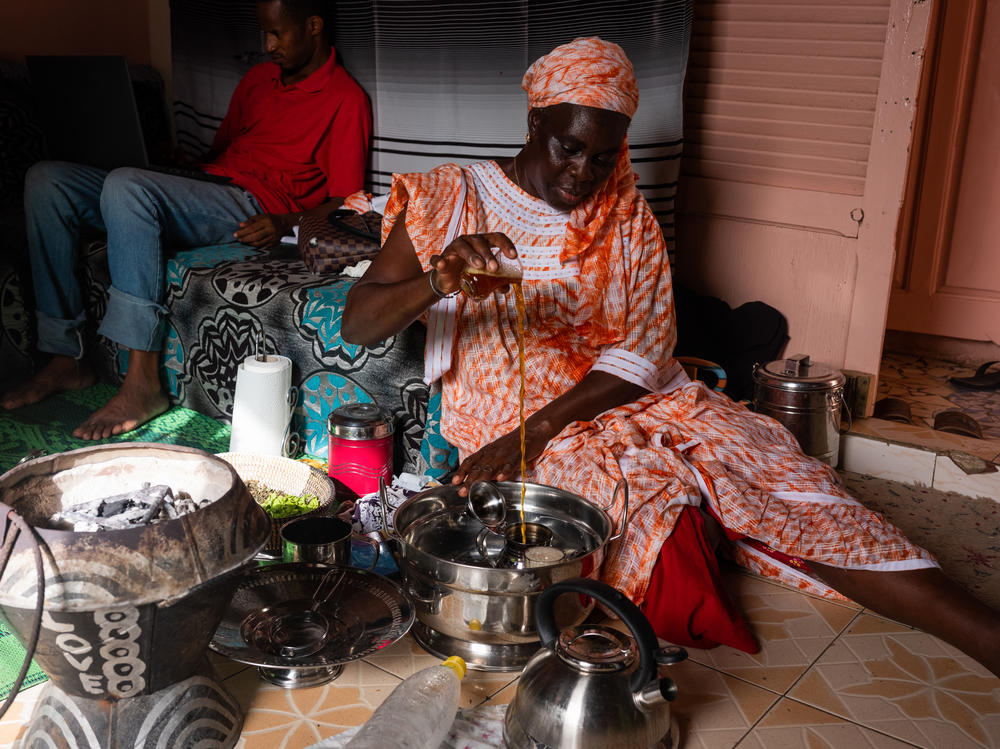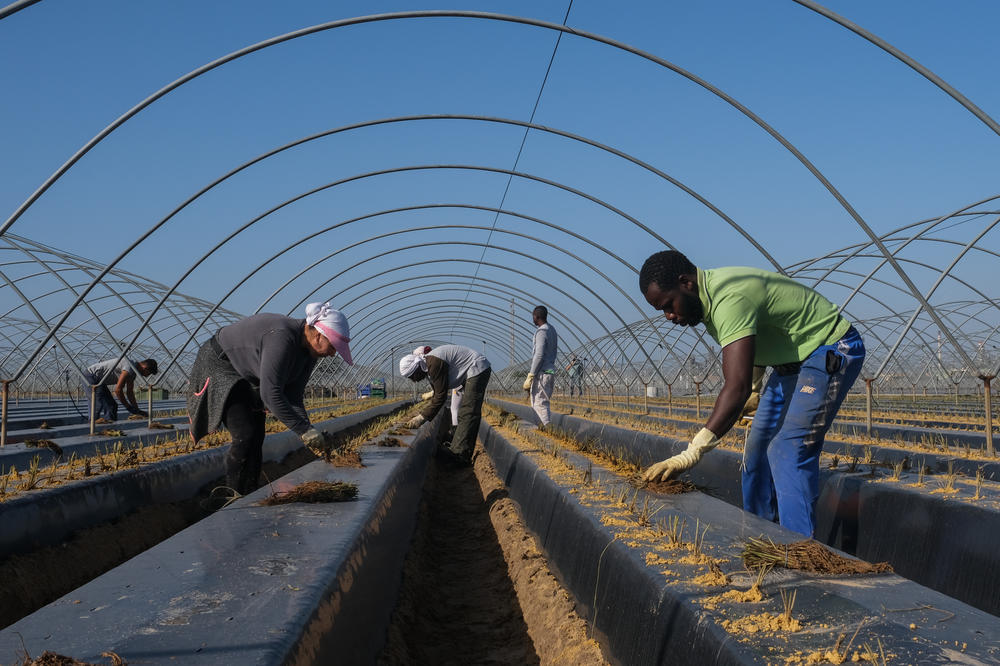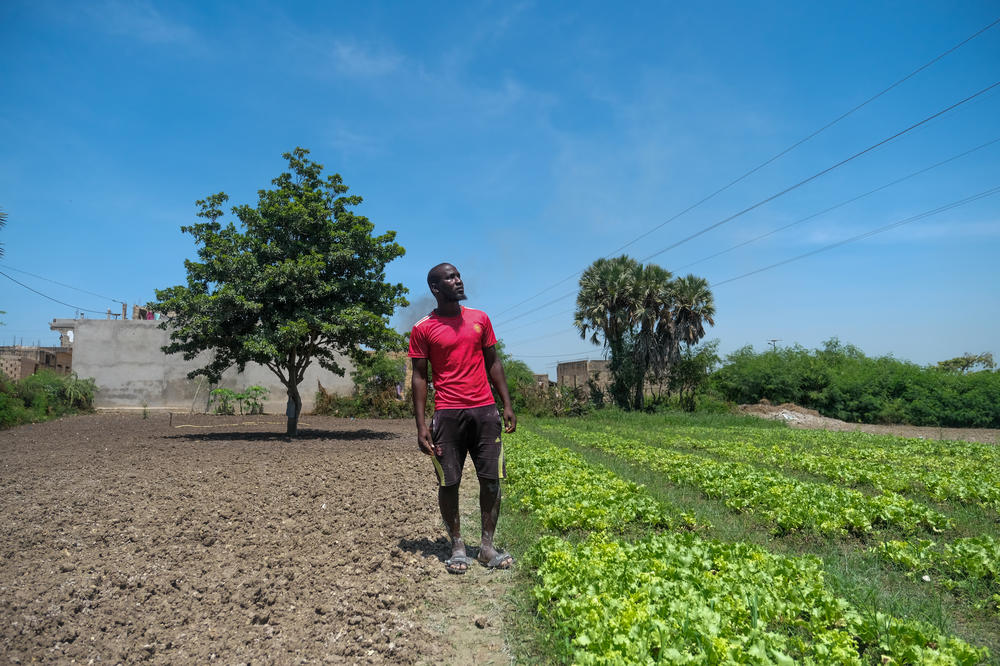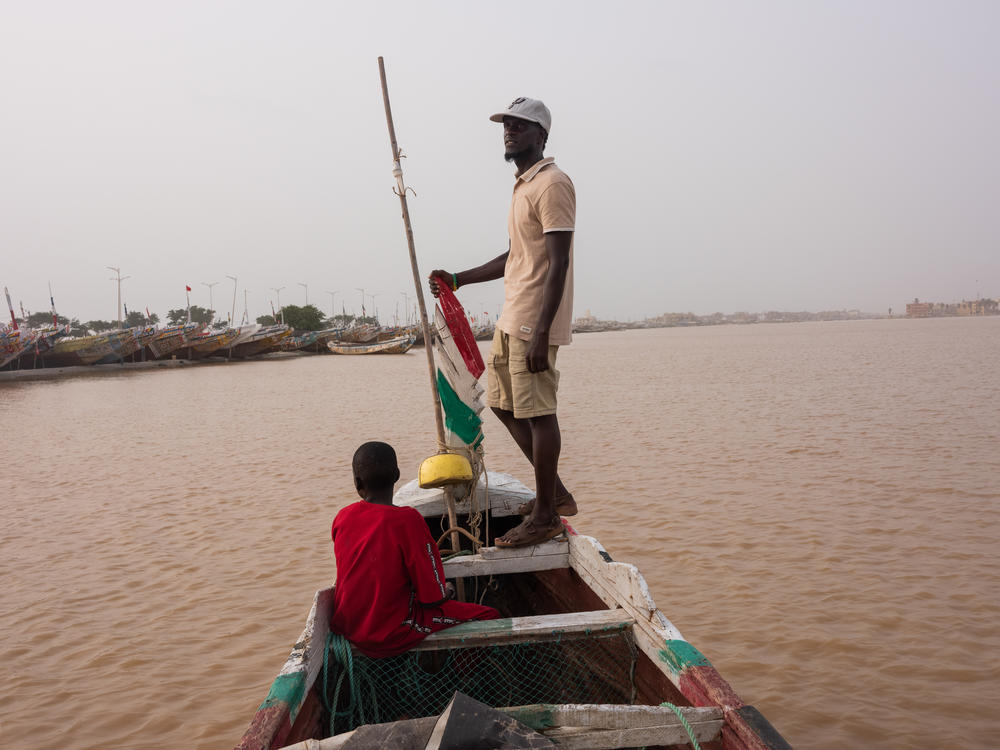Loading...
Section Branding
Header Content
There is a myth about mass migration to Europe. But some people do risk it all
Primary Content
SAINT-LOUIS, Senegal and HUELVA, Spain — Ndeye Mareme Diop spends her day washing and salting fish in Saint-Louis' fish preservation center in coastal Senegal. It's not easy, but it pays the bills.
"I earn my own living. I don't ask anyone for money," she says. "And if I have a problem, I can solve it myself."
But there is one problem she can't solve on her own: climate change. And in recent years, rising seas have threatened her hometown, and overfishing has diminished the fish stock that keeps her employed.
But if you ask Diop about leaving Senegal for Europe, she responds with four words: "No, that's too complicated."
The complications have not kept countless others from embarking on the dangerous journey.
Senegalese are among the top West Africans who arrive in Europe. About 4-5% of Senegal's population lives abroad. And in 2018, Senegal was the tenth largest country of origin for irregular sea-border crossing, according to the Vatican's Migrants and Refugees.
Mamadou Niang has tried to go to Europe three times in recent years. He made it to Spain but was deported twice, and his boat capsized the third time.
Niang lives with his mother and family in Gandiol, Senegal. His late father was a farmer, and his family lived off the land. That legacy has come to an end, he says.
"All of this area used to be fields. We used to grow tomatoes and onions here," Niang says.
These days, the only thing growing is the salinization level in the soil.
"The salt water runs through the village, and it kills all the plants that are being grown," he says. "That's why we can no longer grow anything here."
About 5-9% of the total land area in Senegal is impacted by salinization, which is expected to increase as climate change worsens over time.
If the land weren't giving way to the sea, Niang says he would stay in Senegal and work as a farmer. But fears of a changing environment prompt his decision to leave once again.
He is trying to get to Europe through legal pathways, but they have yet to be fruitful. A visa request through the German embassy was recently denied. He hasn't heard back from other embassies.
Meanwhile, he can't step outside his house without being reminded of what he might be missing in Europe.
A Senegalese neighborhood built by foreign money
Just down the street, a villa-style, multi-level house built by someone in Italy stands out.
Around the corner is a newly-built house with tiled walls, crown molding, and chandeliers with elegant ceiling medallions built by a Senegalese in Italy.
There is another house being built with money from a migrant in France.
Seeing these new homes only hardens Niang's conviction to leave.
It is an inclination that worries Yaram Fall, a matriarch in Saint-Louis.
"They don't understand. I've been to many European countries, like Italy. It's not easy there," Fall says.
She leads an economic interest group for the women who preserve fish, and says the risks of taking a pirogue into the ocean are high. Young people, mostly men, risk arrest or even death. And the country has lost too many promising Senegalese to Europe.
"The development of Africa comes from its own people," Fall says. "There are a lot of them who say they're going to go to Europe. But I think this isn't a good solution."
She lives by a simple motto.
"I'm going to stay here, work here and succeed here," Fall says. "You can find a job, but here too, there are jobs. You have to believe in it."
Fall's defiance is far from what Abdulai Beye knew when he lived in Senegal.
"That's a good rule, but there's no work there," he says.
Beye is thousands of miles away, toiling away in a strawberry field in southern Spain – a country he has called home since 2006.
He gave up his life as a fisherman in Saint-Louis and remembers exactly why.
"You spend more money than you earn in the fishing industry," he says. "It's even hard to sell the fish because people don't have the money to buy."
He holds a forked metal tool in one hand, and surveys endless rows of brown planting beds covered with a plastic sheet.
He pokes a hole in the sheets and shoves the roots of the strawberry seedlings into the planting bed before moving on to the next.
He is hunched over and does this motion thousands of times. There are traces of dirt under his fingernails; his hands reveal the rigid nature of his labor.
"This is harder work, but you can make more money here than in Senegal. Fishing is also hard, but you don't make that much money," Beye says.
The Huelva province produces around 80% of Spain's strawberries, so there is a constant demand for field workers. Beye doesn't make much, but it's enough to support his wife and 20-year-old son back home.
The myth of mass exodus to Europe
While migration to Europe from Africa is a hot-button issue in countries like Spain, most African migrants never leave the region.
According to the International Organization for Migration (IOM), the highest concentration of intraregional migrants is in West Africa.
As of 2020, African migrants made up 14.5% of the global migrant population, compared to Europe's 22.5% and Asia's 41%. Less than a third of all African migrants live in Europe, according to the Mo Ibrahim Foundation.
There are push factors, like unpredictable weather patterns across the region, that send people to Senegal. And Senegal's open borders pull people into the country.
One popular destination is the farming village of Rufisque, about 16 miles east of the capital Dakar.
"70% of people here in West Africa do agriculture," says Ousman Diop, a senior project assistant for the IOM. "And agriculture depends integrally on climate conditions. So that's why, with the impact of climate change, migration is a coping strategy."
Gambia native Seydu Balde left his country in 2015 when a change in the rainy season made farming more difficult.
He was raised growing corn, peanuts and millet. As he grew older, the rainy season in his village was cut short. So was his harvest.
"If it's supposed to weigh 10 kilos, it will be weighing five kilos instead," he says.
He left for Senegal in search of work. Today, he makes a modest amount but says it is more than he would earn back home. He takes a piece of advice when he returns to the Gambia.
"I tell them, 'If there's no work, you need to move out.' Because if there's no work, you'll end up stealing. Right now, if you're caught stealing, you're jailed for two years. That's a waste of time," says Balde.
These frustrations lead some people to go to neighboring countries like Senegal.
Migrants risk death and detention with plans to go abroad
Migrants who do go abroad take immense risks, according to Senegalese native Moustapha Dieye.
"Everybody who leaves and goes to Europe on a boat, there's a moment when they wish they hadn't," Dieye says.
He reached Spain by boat in 2006 and then went more than eight years without seeing his family. During that time, he obtained his Spanish papers and got a stable job at a restaurant in Madrid. Now he can travel between Spain and Senegal.
He walks the streets of Saint-Louis with a sense of certainty. His voice is loud and exudes confidence. Everyone can see how well he has done.
But Dieye says what is harder to see are the struggles that Senegalese face in Europe — everything from trouble getting work papers, to expensive food.
"The youth, with their problems here, all they see is us coming back and forth, and they say, 'Oh, you have a good life; you have things.' But they don't want to see the difficulties that we have. People still want to go, but everyone who comes back does their work to tell people that it's very difficult, and it's not El Dorado," says Dieye.
Back in Huelva, Spain, Abdulai Beye is almost done planting a row of seedlings. There are hundreds of rows left, which means a lot more work ahead of him and a promise of job security.
Meanwhile, his son is back in Saint-Louis, enjoying his father's support from home. He doesn't want to come to Spain, says Beye. For now, his family is taken care of, and Beye has no regrets.
Copyright 2023 NPR. To see more, visit https://www.npr.org.
